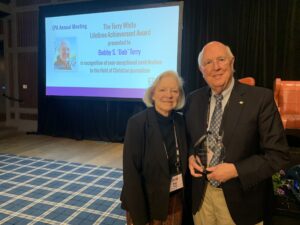
WASHINGTON (BP)–Experts are questioning two new studies that may be used to cast doubt on the usefulness of adult stem cells in treating disease, CNSNews.com reported March 15. The studies seem to contradict previous findings that adult stem cells offer both an effective and ethical alternative to stem cells taken from human embryos.
The studies, one American and one British, are being read in a way that suggests adult stem cells are not able to differentiate into various types of tissue — contrary to what was reported in numerous other recent studies.
Instead, the new studies suggest the adult cells may be fusing with other cells, with possibly harmful effects.
Some media reports have characterized the new research as delivering “a blow” to those who oppose embryonic stem cell research. According to some reports, the new studies serve as a warning against adult stem cell “hype.” Pro-lifers have warned that the new studies will be used by those who advocate increased public funding for destructive research on embryos.
Stem cells offer the promise of treatment for some of mankind’s most devastating diseases, including Parkinson’s and Alzheimer’s diseases. Some scientists argue that cells harvested from early stage embryos offer the most potential, having the ability to grow into skin, bone, brain or nerve tissue before being transplanted into a patient.
But the embryos providing these cells — whether cloned in a lab or left over after in-vitro fertilization (IVF) treatment — are destroyed in the process.
Great interest has therefore been shown, especially among pro-lifers, in news that adult stem cells, taken from sources such as umbilical cords or bone marrow, show similar promise.
British scientists reported last year that stem cells from bone marrow could be turned into tissue, which could help treat kidney damage. The same team earlier found that the bone marrow cells could transform themselves into liver cells and repopulate damaged livers. In 2000, researchers at the University of South Florida announced that bone marrow cells could be converted into immature nerve cells.
It has been thought that the adult cells revert to a state similar to that of embryonic stem cells, and only then differentiate into the new types of cells.
But the two new studies, published in the journal Nature in mid-March, appeared to suggest otherwise.
Researchers mixed adult stem cells from the brain and bone marrow of mice with embryonic stem cells in a petri dish. They found that in many cases, rather than be reprogrammed and thus offer potential therapeutic use, the adult cells had simply fused with the embryonic ones.
If these hybrid cells were used in humans, they could have unknown and possibly harmful effects, it was argued.
Nature quoted the leader of the U.S. team, Naohiro Terada of the University of Florida in Gainesville, as saying the finding was a warning against “the overzealous trend” to conclude that the reprogramming of adult stem cells had taken place without carefully analyzing the genetic makeup of the new cells.
The head of the British team, Austin Smith of the University of Edinburgh, said the study showed that calls to suspend research using embryos weren’t scientifically justified.
The new studies are being called into question, however.
Nick Wright, one of the British researchers behind the promising kidney and liver cell studies, noted the new research had taken place in a lab and not in living animals. He added that nothing in the new studies causes him to doubt the results of adult stem cell research in animals.
More outspoken was Richard Doerflinger of the Secretariat for Pro-Life Activities at the U.S. Conference of Catholic Bishops, who said the suggestion that the new studies demonstrated a lack of promise in adult stem cells was “nonsense” and “a misuse of science.”
What the studies actually showed, he said, was that “you shouldn’t mix adult and embryonic stem cells.”
“And of course such mixing happens whenever you put embryonic stem cells into an adult body, because our bodies already have adult stem cells in them,” Doerflinger said.
The studies showed nothing in particular as to how adult stem cells turn into other cells in the body, a process Doerflinger said happened all the time.
“In our own bodies, we don’t direct adult stem cells down different pathways by mixing them with embryonic stem cells,” he said.
And in Australia, where the issue of embryonic stem cell research is currently the subject of considerable political debate, one of the country’s leading adult stem cell researchers, Rod Rietze, also raised doubts about the new studies.
“A more parsimonious conclusion of these studies is that embryonic stem cells fuse to all types of cells, except for adult tissue stem cells, indicating that embryonic stem cells would not be a good source of cells for therapy,” Rietze said from Melbourne.
“Whereas I can see no data to suggest that the adult tissue stem cells have this property,” he said.
Asked for her reaction, Josephine Quintavalle of the British-based Comment on Reproductive Ethics said: “We continue to maintain that the potential of animal experimentation has not been exhausted, and that the value of adult stem cells has not yet been extensively explored or exhausted.”
Writing in an Australian daily recently, medical ethicist Amin Abboud of the University of New South Wales said research into adult stem cells was the best place to invest medical research resources.
“There is something holistic and natural about adult stem treatment,” Abboud wrote. “It involves harnessing our own cells to treat ourselves.
“Adult stem cells appear to act as the body’s on-call, 24-hour-a-day microscopic medical dispensary for wound repair.”
–30–
Goodenough is the Pacific Rim bureau chief with www.CNSNews.com. Used by permission. A New York Times article on March 7, titled “Study Expands Range of Stem Cell Abilities,” reports on a study at Houston’s M.D. Anderson Cancer Center which, as one expert put it, found what “appears to be a regenerative response we were never previously aware of” in adult stem cells.















